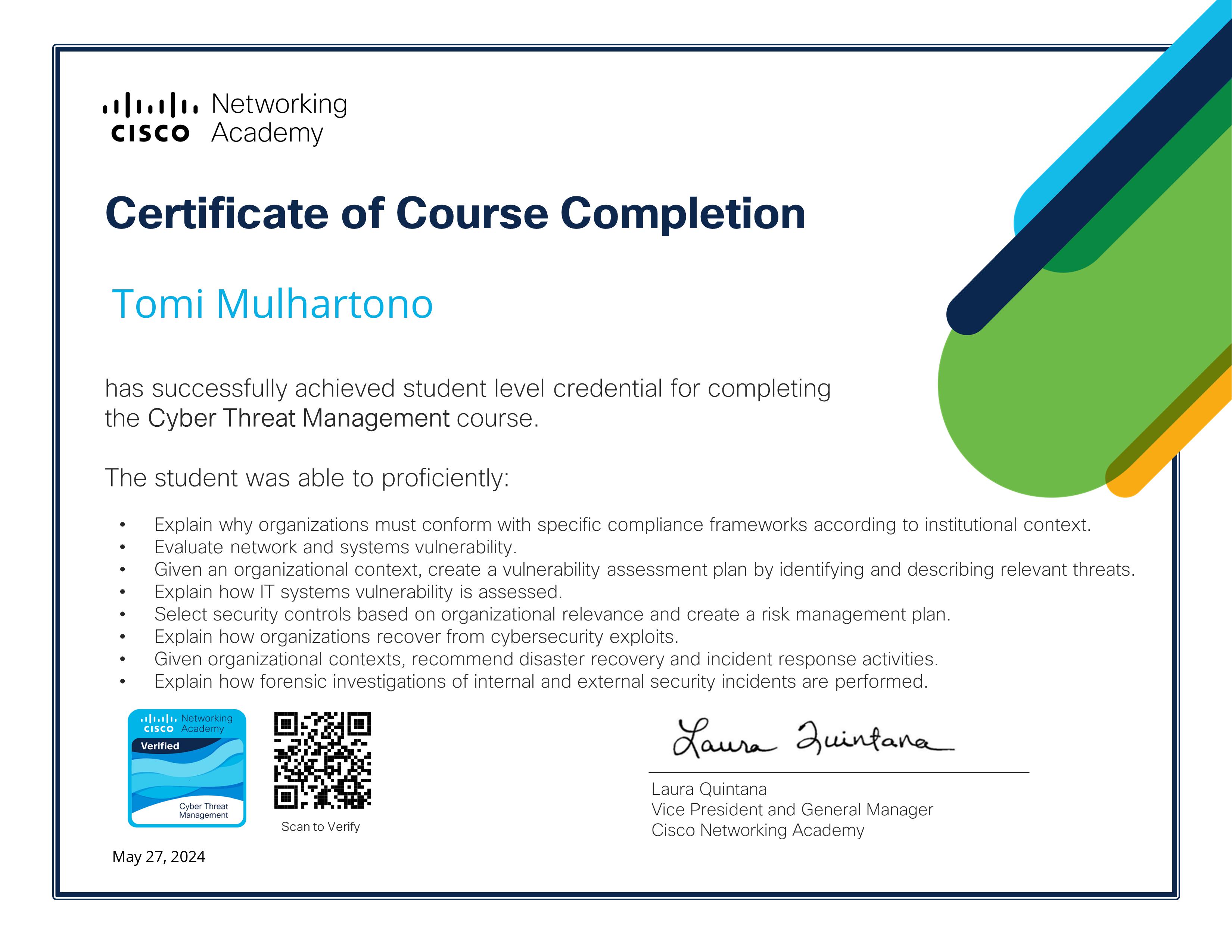
In today’s interconnected world, cybersecurity has become paramount for individuals and organizations alike. With the ever-evolving threat landscape, it’s crucial to stay ahead of the curve and equip ourselves with the knowledge and skills to combat cyber threats effectively. Recently, I embarked on a journey to enhance my cybersecurity expertise by enrolling in Cisco Networking Academy’s Cyber Threat Management course. This comprehensive course provided me with a deep dive into the intricacies of cybersecurity, equipping me with the tools and strategies to navigate the complex world of cyber threats.
Delving into the Fundamentals
The course began by laying a solid foundation in the fundamentals of cybersecurity, introducing me to key concepts such as:
Common Vulnerability Scoring System (CVSS): A standardized way to measure the severity of cybersecurity vulnerabilities.
Disaster Recovery: The process of restoring operations after a cyberattack or other disruption.
Evidence Handling and Attack Attribution: Techniques for collecting and preserving evidence to identify and track cybercriminals.
Governance: Establishing policies and procedures to manage cybersecurity risks.
Incident Response: The process of identifying, containing, and eradicating cyberattacks.
Network and Server Profiling: Identifying and characterizing the characteristics of networks and servers to assess their security posture.
Penetration Testing: Simulating cyberattacks to identify vulnerabilities and test security controls.
Risk Assessment: Identifying, analyzing, and prioritizing cybersecurity risks.
Risk Management: Implementing strategies to mitigate cybersecurity risks.
Secure Device Management: Securing and managing devices to protect against cyber threats.
Security Assessments: Evaluating the security posture of an organization’s systems and networks.
Security Controls: Implementing measures to protect against cyber threats.
The Cyber Kill Chain: A model that describes the stages of a cyberattack.
The Diamond Model of Intrusion Analysis: A framework for analyzing cyberattacks.
Threat Intelligence Services: Utilizing external sources of information to identify and track cyber threats.
Hands-on Experience
The course went beyond theoretical concepts, providing me with hands-on experience through practical exercises and real-world scenarios. I had the opportunity to apply the knowledge I gained to:
Conduct vulnerability assessments to identify and prioritize vulnerabilities in networks and systems.
Develop and implement incident response plans to effectively respond to cyberattacks.
Design and configure security controls to protect against a wide range of cyber threats.
Analyze cyberattack data to identify patterns and trends.
Utilize threat intelligence tools to stay informed about the latest cyber threats.
Conclusion
Completing Cisco Networking Academy’s Cyber Threat Management course has been an invaluable experience, equipping me with the knowledge and skills to navigate the ever-changing cybersecurity landscape. I am now confident in my ability to identify, assess, and mitigate cyber threats, protecting myself, my organization, and my clients from the ever-present danger of cyberattacks.
Call to Action
In today’s digital age, cybersecurity is no longer an option but a necessity. Whether you are an individual or an organization, it is crucial to invest in cybersecurity education and training. Cisco Networking Academy’s Cyber Threat Management course is an excellent resource for anyone seeking to enhance their cybersecurity expertise. With its comprehensive curriculum, hands-on exercises, and real-world scenarios, this course provides the knowledge and skills you need to stay ahead of the cyber threat curve.